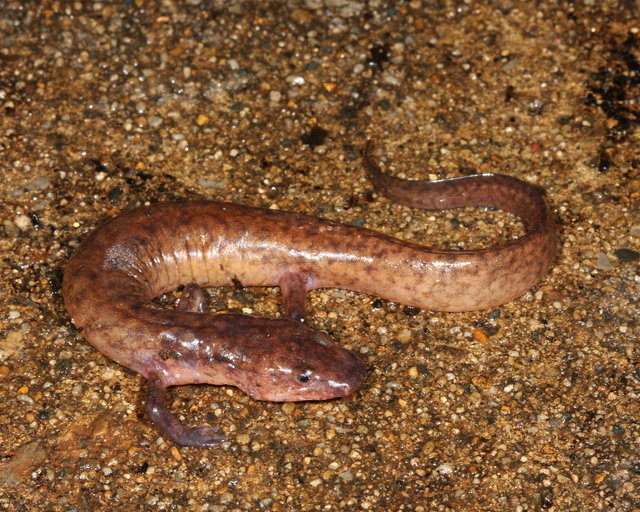Atlas of Amphibians in Tennessee - Austin Peay State University
AmphibiaWeb - University of California
Caudata Culture
Tennessee Amphibians & Reptiles - Matthew Niemiller
Wikipedia
Red List of Threatened Species - IUCN
ARKive - Environmental Agency, Abu Dhabi
[NOTE: The Austin Peay atlas was published before this species was recognized, so the link above will take you to the entry for the Tennessee Cave Salamander, of which this species was formerly considered a part. On that page is a link for new county records, which will take you to a page that talks about the split.]
 Along with the Tennessee Cave Salamander (G. palleucus), this critter is the state amphibian of Tennessee. The Berry Cave Salamander is an East Tennessee specialty, with populations officially known from caves in Knox, Roane, McMinn, and Meigs counties. Generally, these guys are paedomorphic, which means that they keep their larval form all throughout their life. This would be like a tadpole that never turned into a frog but simply grew big and reproduced as a tadpole. However, you can see from the photo to the right that they do occasionally transform into an "adult" body shape.
Along with the Tennessee Cave Salamander (G. palleucus), this critter is the state amphibian of Tennessee. The Berry Cave Salamander is an East Tennessee specialty, with populations officially known from caves in Knox, Roane, McMinn, and Meigs counties. Generally, these guys are paedomorphic, which means that they keep their larval form all throughout their life. This would be like a tadpole that never turned into a frog but simply grew big and reproduced as a tadpole. However, you can see from the photo to the right that they do occasionally transform into an "adult" body shape.Unquestionably the strangest herp-related experience I've ever had involved a Berry Cave Salamander. Quite honestly, if someone else told me this story had happened to them, I wouldn't believe it. But it is what it is. I had just moved to Anderson County from Denver and knew basically nothing about the local amphibians. We had a torrential downpour one night, and the next day a kid from down the street brought me a dead untransformed Berry Cave Salamander that he said he found in the road during the rain the night before. (I don't remember if it was alive when he found it.) I thought it was kind of neat, but, not knowing any better, I figured such occurrences must be commonplace in this new land I had moved to. So they threw the specimen away and that was the end of it.
Photos by Matthew Niemiller




